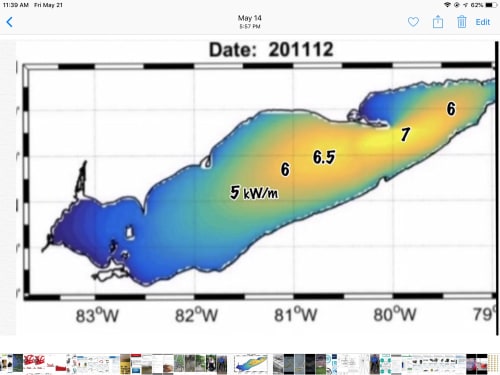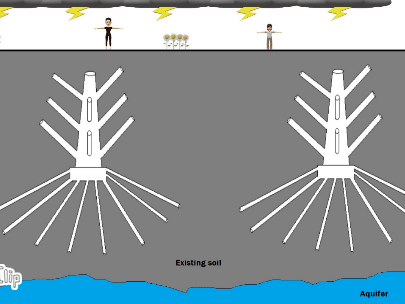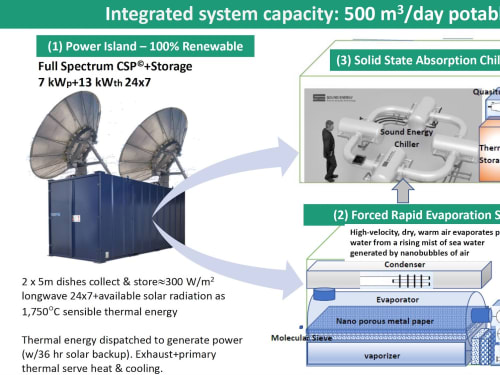2021
Sustainable Technologies/Future Energy
The United States is not ready for the effects of climate change and the future demand for power.
It’s abundantly clear that the power grid in the United States is not ready for the effects of climate change, including the extreme weather events that come with it. After all,
We need to redeploy the human workforce for sustainability.
DIRECT ENERGY CONVERTOR — THERMIONIC TRANSISTOR
Direct conversion of thermal energy to electric energy remains one of the most promising, yet challenging, methods of power production.
Direct thermal to electric energy conversion has potential to replace internal combustion engines and turbines in nearly all electrical applications, thanks to extremely low cost, lightweight, scalability, and little-to-no maintenance.
The first graphic shows storm wave energy up to 7 kw per meter of wavefront for Lake Erie. These storm waves cause millions of dollars of damage along the shorelines and climate change is making them more violent every year.
This concept uses an array of Wave Energy Converters (WECS) called Edinburgh Ducks to capture that storm wave energy,
The VAYU is a prototype under development to meet the needs of electricity consumption by our society in the future. The renewable energy namely rain, solar and wind. Not only does it use renewable energy but also simple resources which are easily accessible and available globally, such as bamboo as a pole.
On wind turbines VForce® patented blade morphing technology can generate an estimated 8-20% additional electricity generation (Lindenberg et al. 2008) by operating in low wind situations.
The technology is suitable for tapered blades and is of light weight construction.
VS infiltrator is an innovative component/module which may be used to increase the infiltration capacity of soil in areas where the infiltration capacity of soil is low or low permeability of the soil. This infiltrator may be made from steel, recycled PVC,
It utilizes its advanced solar thermal collection and storage technologies as a power source for rapidly removing water from agricultural run-off and sludge using a process that increases the rate of evaporation many magnitudes of that of natural evaporation. Because of this accelerated evaporation, the process can recover 500m3 (132,086 US gallons) of pure water per day. However,
This is a proposal to use a water wheel floating on a river to generate clean electrical energy. Unlike solar and wind generators, rivers flow 24 hours a day.
A water wheel can be scaled up or down. The surface speed of rivers varies between about 3-8 MPH. Floating water wheels are typically 25-45% efficient,
Page 10 of 11









